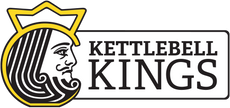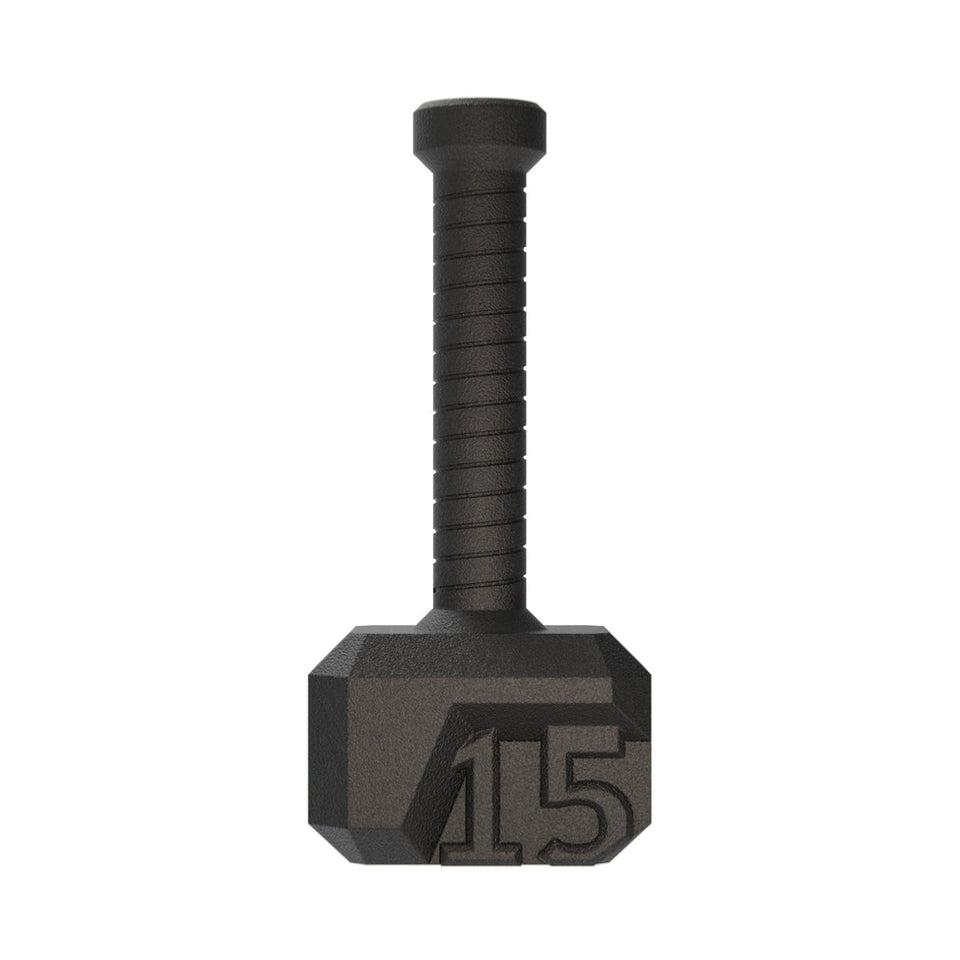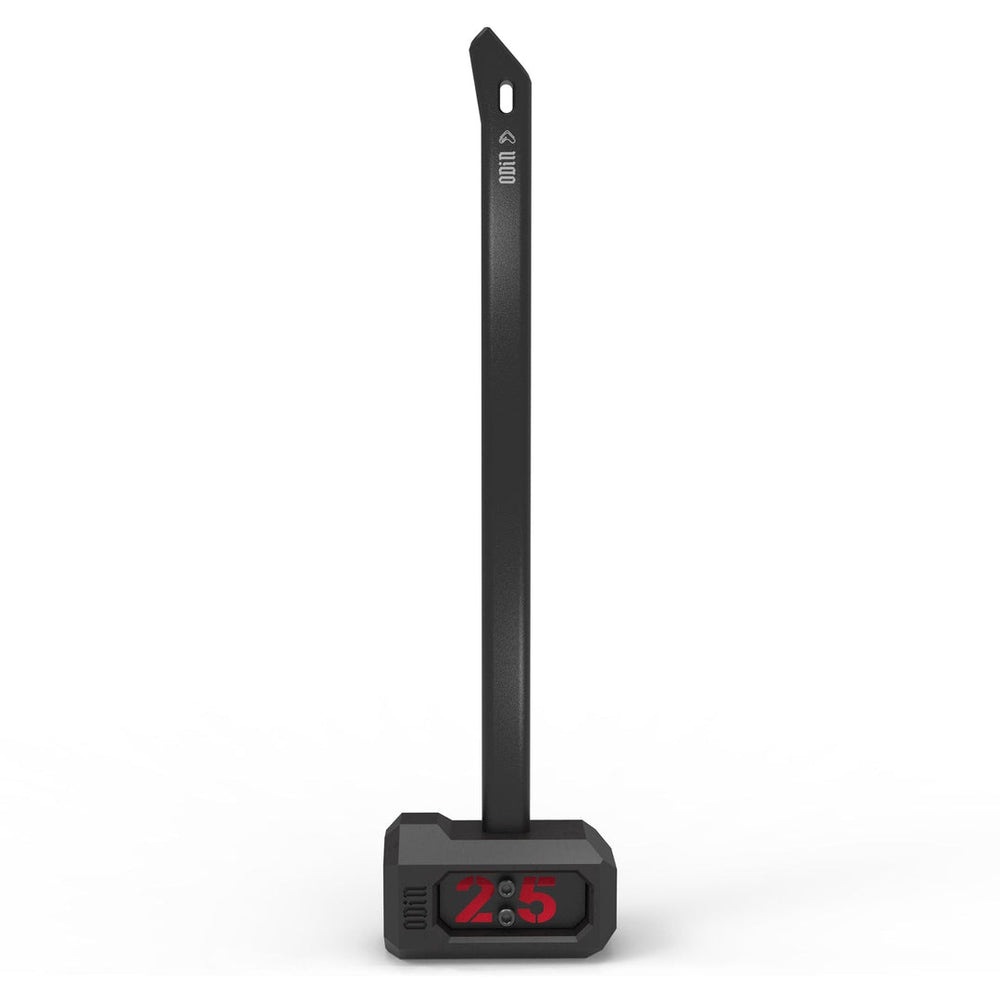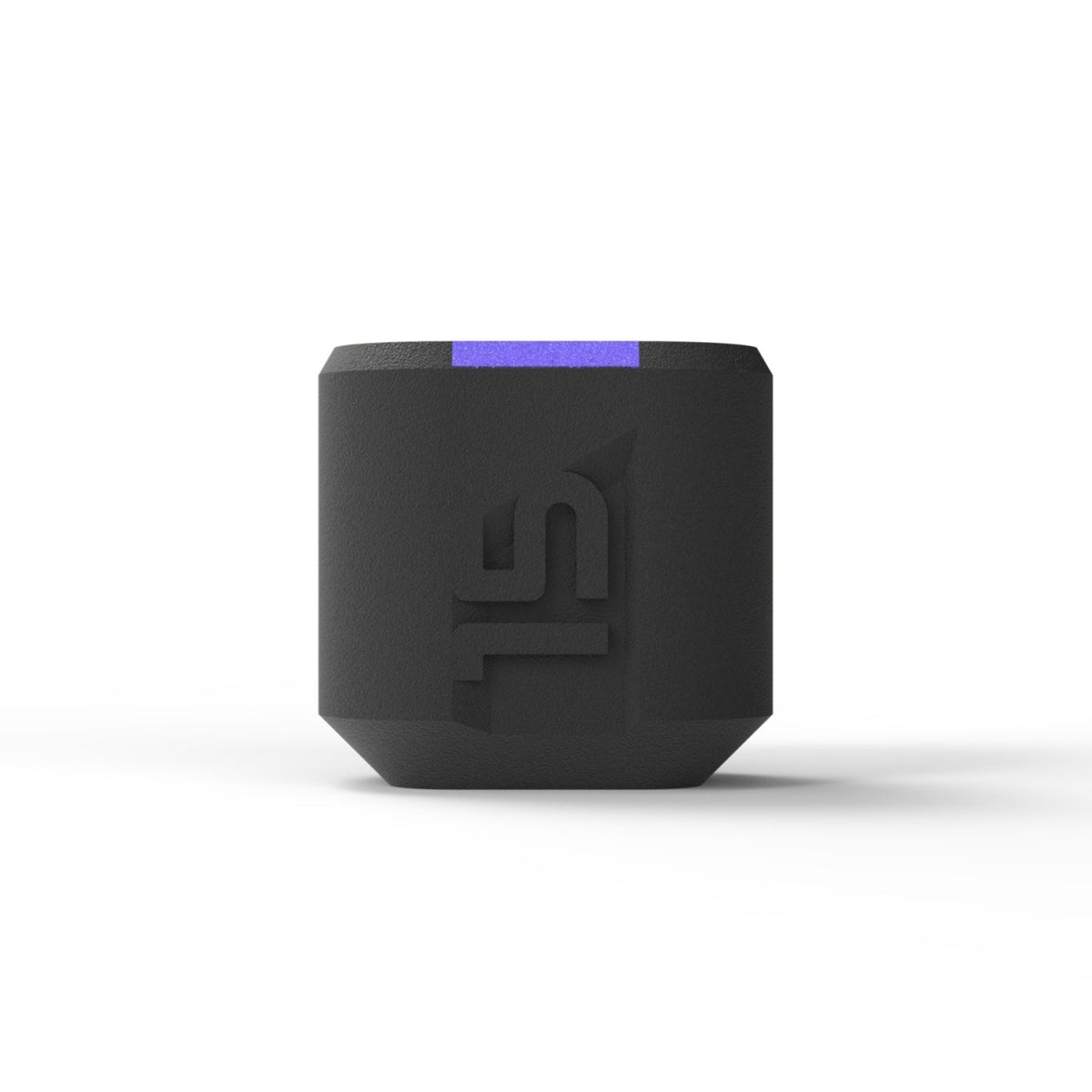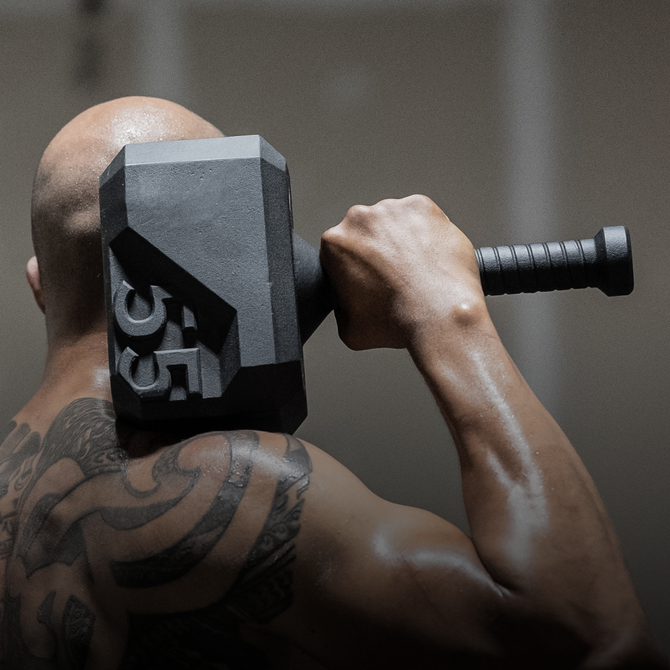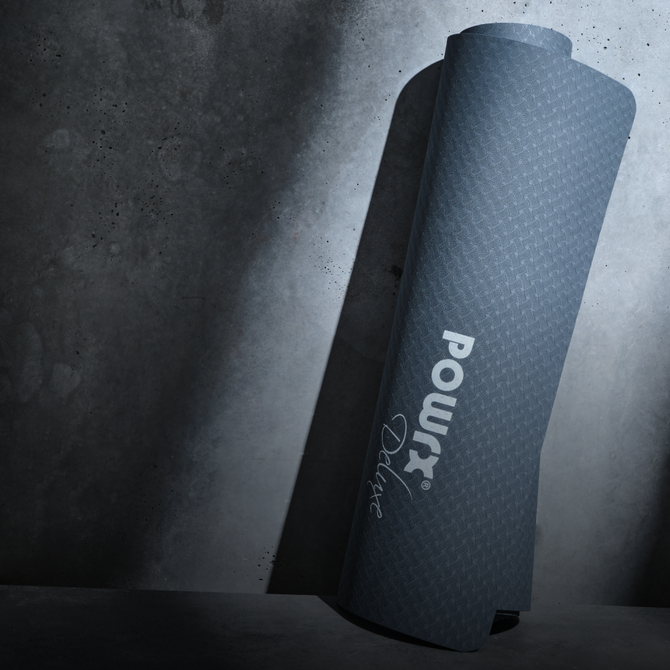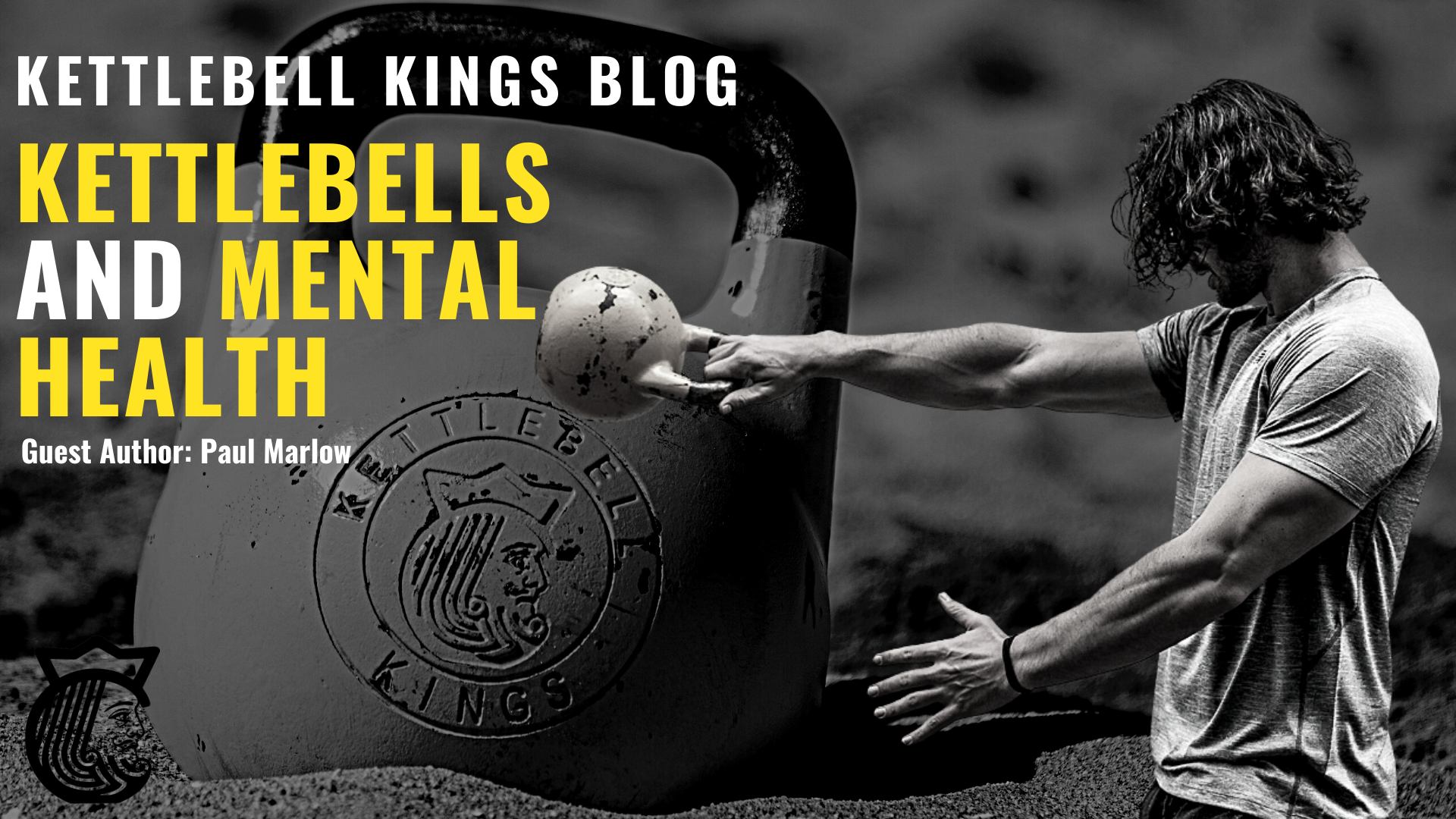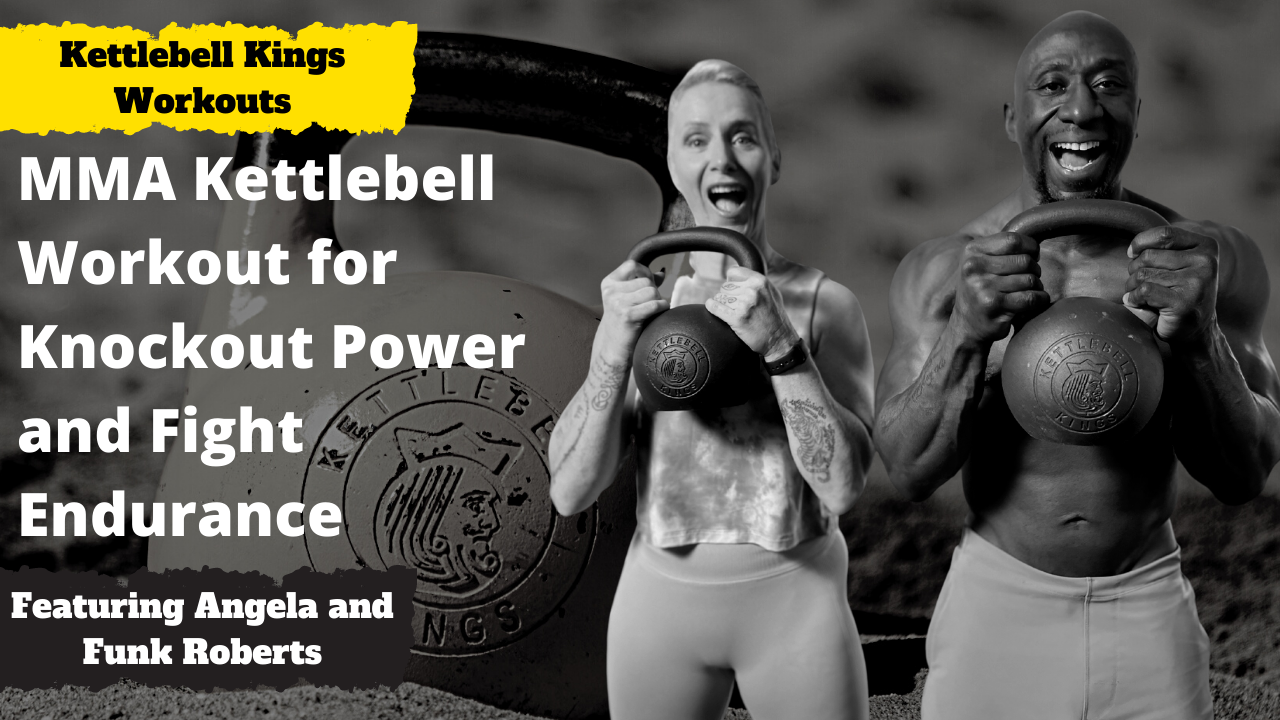Introduction
While it may not look like much of a workout at first glance, the kettlebell is your one-way ticket to fit. Whether you're 20 or 65, kettlebell training can provide some major benefits for strength, endurance, physique, and overall functionality.
Packing the same punch as the good ol' dumbbell and any type of exercise you'd use a dumbbell for, the kettlebell is designed as a more functional and practical way to develop power, endurance, muscle, and strength for maximum results. Despite being one of the most underused and undervalued pieces of equipment in the gym, don't be fooled by its small but mighty size. They're compact and incredibly versatile, and one of the best pieces of equipment for a killer home workout warrior.
These small(ish) round-shaped steel or cast iron weights have been around for decades, being a major symbol of strength in Russia dating back to the 1700s. They've had a colorful history throughout the 20th Century being used in everything from circuses to the army.
But with the rise of CrossFit and Strongman, the kettlebell has gained a fair bit of attention and we want to bring it to yours. Whether you're looking to gain mass, improve posterior chain strength, or shed fat, the kettlebell needs to be your go-to piece of training equipment. It's one of the best and most ideal tools for ballistic full-body exercises using high muscle forces, which makes them superior for improving muscular strength, endurance, and power, along with cardiorespiratory fitness.
What more could you want?
Why having functional strength is important
I can bet my bottom dollar that when you think about training, mobility and functional strength don't make it onto your radar. To be frank, it doesn't for most. The majority of people are looking for maximum strength, power, speed, and endurance–but they forget that in order to get there, they need mobility and functional strength. They're the foundation of proper movement throughout training time and daily activities, and ensuring they're solid means less risk of injury, fewer muscle imbalances, and overall better performance.
If you want to achieve that, kettlebell training is one of the best ways to do that.
Functional strength is essential for everyone, regardless of age, fitness levels, or exercise experience. One of the key components of functional training is just moving—moving with more intention, in multiple directions, at different speeds, and using an array of equipment that engages every muscle in the body.
We're not going to dive deep into the benefits of functional training now because that's a huge topic, but here's a quick overview of why training for functionality may be better than training for strength, size, mass, and other common fitness goals.
1. Better movement patterns
2. Improve movement efficiency
3. Enhance physique
4. Improve balance and coordination
5. Greater mobility
6. Increase aerobic capacity
7. Build lean muscles
Simply put, functional training isn't about isolating a particular muscle group or building size; it's about diversifying your strength training routine to build practical strength that translates into real-life benefits.
Struggles for men over 40
We all wish that our health stayed the same as we age, but the fact of the matter is that gray hair isn't the only thing that we welcome with aging. There are a number of different things that tend to crop up past the age of 40, whether we like it or not.
1. Hormonal imbalances
If you want to build muscle and lose fat, this one is huge. Hormones control your metabolism, muscle growth, sleep, and virtually every other function in your body, so keeping them balanced is key for optimal health and imbalances are a major issue that comes with aging. There are three specifically that we need to watch:
1. Testosterone: After the age of 30, testosterone levels start to decline. We see a yearly drop of about 1.6% per year for total testosterone and free and bioavailable levels by about 2%–3% per year due to increases in sex-hormone-binding globulin (SHBG) levels that bind testosterone and decrease availability. Although testosterone plays a major role in muscle growth and recovery, it's also needed for a host of other physiological functions, including strength, muscle mass, body composition, insulin sensitivity, mood, bone density, libido, and physical performance. And one of the best ways to keep T levels up is resistance training combined with high-intensity cardiovascular exercise–both of which you can get with kettlebells.
2. Estrogen: Estrogen is the other major hormone you want to watch that can be a massive problem for aging men. While your body needs small amounts of estrogen, an excess can spell trouble for testosterone and bone density, which subjects men to an increased risk of fractures. But it's a double whammy. High body fat means increased aromatization, higher estrogen, and lower testosterone. So, we keep the excess body fat away with high-intensity resistance training, curb aromatization, and balance estrogen and testosterone.
3. Cortisol: Acute stress is normal, but chronic mismanaged stress can lead to chronically elevated levels of cortisol, which has an inverse relationship with testosterone; High cortisol causes testosterone levels to decline. Not to mention that cortisol also causes fat storage, especially in the abdominal region—and we go back to the cycle of fat, estrogen, and testosterone.
2. Maintain muscle mass
Let's face it. Once you pass the big 4-0, maintaining muscle mass isn't as easy as it was when you were in your 20s. Muscle building isn't as simple, recovery isn't as quick. It's the natural progression that happens with age and it's what's clinically referred to as sarcopenia, or involuntary age-related loss of muscle mass. While it may not seem like a big deal at first, it can have serious adverse effects on health and quality of life because it often results in poor physical activity and a higher risk of falls and fractures. Research indicates that after the age of 30, muscle mass decreases at a rate of approximately 3–8% per decade and increases substantially after 60. And if you thought that was bad, loss of muscle also means greater increases in fat mass and insulin resistance . However, if you want to avoid losing muscle, hit the kettlebells. Physical activity and resistance training are some of the best and most effective ways to protect against the development of sarcopenia.
3. Growth hormones
Along with testosterone, growth hormone (GH) is one of the major anabolic hormones involved in maintaining muscle and bone mass, promoting lipolysis (and limiting visceral adiposity), along with regulating carbohydrate metabolism, cardiovascular function, aerobic capacity, and cognitive function. However, as with testosterone, there is a decline in GH levels that naturally happens with aging at a rate of about 15% per decade of adult life, which can result in decreased bone density and muscle loss.
8 Benefits of kettlebell training for men over 40
If you've used a kettlebell in your training before, you're probably well aware that it's not some easy peasy piece of equipment you can man-handle like a piece of cake. The simple iron weight can challenge your body in ways you never thought possible and build next-level strength.
While kettlebells have been adopted into some of the most popular training programs, such as CrossFit, the use of kettlebells still remains a relatively niche sport and knowing how to use these guys isn't nearly as intuitive as more popular equipment like barbells, dumbbells, and machine weights.
So, if you're ready to challenge your body and mind, here's why you need to be using kettlebells.
1. Low-impact, time-efficient cardio
If you're sick and tired of the lackluster results from conventional cardio, kettlebells are a solid replacement. When doing high-rep ranges at a consistent pace, they're a great way to boost heart rate while building functional strength to promote many of the same benefits as HIIT or what I love, metabolic resistance training (MRT). Kettlebell workouts don't require loads of time and because they're performed at submaximal loads, they place a lot of positive demand on your cardiovascular system so you can boost endurance in substantially less time.
Here's what I mean. A 2010 study published by ACE sought to investigate the energy cost and exercise intensity of kettlebell workouts using 10 male and female volunteers. They found that just a 20-minute kettlebell workout burned, on average, 272 calories, which didn't account for any additional calorie burn due to the substantial anaerobic effort. That added up to about 20.2 calories burned per minute, which is equivalent to running at a 6-minute mile pace. They chalked up the stunning results to the fact that kettlebells involved total-body movements done at a fast pace due to the interval-training format, which means you're getting a massive bang for your buck in a short amount of time.
2. Reduce muscle imbalances
Muscle imbalances may not seem like a huge deal in the grand scheme of things, but they can completely derail your progress long-term and create the potential for serious injuries. They happen when one group of muscles are unequal in size or strength compared to the opposing group of muscles. The overactive muscles can pull your body into poor posture or poor movement patterns, which also leads to impaired mobility in joints and muscle stiffness. While muscle imbalances typically occur in highly mobile areas of the body—hips, shoulders, thoracic spine—they can happen virtually anywhere.
But there's an easy fix kettlebells. While some exercises with kettlebells are bilateral, the majority are unilateral in nature, meaning strength and muscle imbalances don't stand much of a chance. If one arm is constantly outperforming the other, throwing some kettlebell training into your program will give your other arm a much-needed opportunity to develop and catch up.
3. Boost testosterone and GH
While sleep is a major part of boosting testosterone and growth hormone–the majority of these anabolic hormones are secreted during slow-wave, deep sleep–high-intensity resistance training is also a huge factor. A study published in the Journal of Strength and Conditioning Research looked at the hormonal response to an intense bout of exercise using kettlebells. Ten resistance-trained men performed twelve rounds of 30s kettlebell swings using a 24kg kettlebell followed by 30s of rest. Results showed this:
- Testosterone levels increased immediately following the swings by 14%, which returned to below baseline values after 30 minutes
- Cortisol increased by about 45%, which is typical of exercise, and dropped back to normal within 30 minutes
- GH, which plays a massive role in fat metabolism, increased 18x its resting level immediately following exercise and continued to increase up to 21x after 15 minutes, then dropped back down to 16x after 30 minutes
Kettlebell swings, when done with a light-moderate weight for time, can cause a spike in the hormones required for exercise adaptations, which makes them an awesome addition to any training program.
4. Build muscle and power
When it comes to building posterior chain strength, there's nothing quite like the kettlebell for doing it. The kettlebell's unique design allows its center of mass to extend beyond the hand, which facilitates total-body ballistic movements similar to those seen in things like snatches and cleans during powerlifting or CrossFit. Unlike conventional weightlifting movements, the kettlebell, specifically kettlebell swings, are one of the best movements for developing thick back muscles, strong and powerful glutes and hamstrings, and traps for days. A strong, muscular posterior chain defines an athlete and kettlebell training is the way to achieve that.
And because kettlebell movements can take on one of two forms—slow and deliberate, or fast and explosive—you're getting maximum muscle activation for maximum strength and power gains.
5. Better posture, balance, and coordination
Just as I mentioned about reducing muscle imbalances, kettlebell training is awesome for improving posture because they help to balance muscle strength and prevent overactivation and overuse that can lead to poor posture and injuries. But it also takes a lot of coordination and mobility to use kettlebells properly. Unlike barbells or dumbbells, the offset weight of a kettlebell means you need to have impeccable form and coordination to perform the exercise correctly and avoid injury. There's no way to perform many of the complex movements without proper kinesthetic awareness, mobility, and stability.
The best part of kettlebell training is that you don't have to have these to start doing it. Incorporating kettlebells into your program helps to build overhead mobility, coordination, and stability with things like Turkish get-ups and kettlebell windmills, and better hip mobility with deep goblet squats, deadlifts, and swings.
6. Strengthens the core
The core is the center of your body (literally) and a strong core is required for more than just aesthetics. It's needed for maintaining good posture, stabilizing the spine, supporting the trunk, regulating internal abdominal pressure, supporting internal visceral organs, and assisting with forceful expiration. But here's the thing. Contrary to popular belief, you can't crunch your way to a strong core and rock-solid abs. If you want core strength, compound, unstable movements are some of the best exercises you can do to build a solid core.
The nature of kettlebells changes your center of gravity and forces you to engage and brace your core, which helps to build functional strength and stability in the spine. Rotational movements with kettlebells are also essential for strengthening the core. That's things like around-the-worlds, Russian twists, Turkish get-ups, and one-arm KB swings.
7. Improves joint health
This one is huge for people over the age of 40 and it's a major win where kettlebell training is concerned. You can't argue that heavy barbells and dumbbells can be incredibly hard on the joints, and when you're already working against hormone levels and muscle mass, the last thing you want is to be worrying about your joints. Because kettlebell training exercises are usually full-body, compound movements, they're ideal for improving or maintaining joint health. Not to mention that strengthening the stabilizer muscles with these movements is extra support for the joints, tendons, and ligaments, especially those of the knees, elbows, and shoulders.
Plus, the fluid motions involved in using kettlebells are often easier on the joints, so even if you don't have the strength and stability starting out, you can gradually build strength to protect and reinforce your joints. Similarly, kettlebell training can also be really beneficial for improving joint flexibility, ie the elasticity of tendons and ligaments within and around the joint capsules.
8. Reduces the risk of injury
There's no denying that as we get older, injury risk can take a sharp increase. A pulled lower back, strained shoulder, twisted ankle… It happens. But kettlebell training offers a unique advantage for reducing injury risk in that they strengthen the entire body to prevent muscle imbalances and asymmetries that can lead to overuse and injuries. For example, kettlebell swings are one of the most effective exercises for increasing low-back strength and improving the body's ability to effectively respond to an outside force trying to alter its stationary position. And a strong, stable back can help to reduce the risk of major injuries. Not to mention they're amazing for strengthening and stabilizing the shoulders to prevent rotator cuff injuries.
The 4 most common KB mistakes to avoid
Kettlebells aren't the easiest or most intuitive pieces of equipment to use, so it's easy to fall into mistakes that can result in serious injury. The key to getting a better kettlebell workout (activating the right muscles) and avoiding injury is to watch out for these!
1. Arching the low-back: If you're not keen on throwing out your back and landing flat on the floor, paying attention to your back is key. Too much arching of the low back means you're not maintaining a neutral spine, which establishes correct alignment and is done by pulling in the navel and engaging the core muscles. Whatever the exercise you're performing - swings, high pulls, cleans, snatches, squats - keeping a straight line from your hips to your head is key. Ideally, you should be able to lay a broomstick or pole along your entire spine.
2. Not doing a hip-hinge: Despite how simple of a move it is, you'd probably be surprised at the number of people who don't hinge properly during a swing. If you want to target the glutes during any lower body kettlebell exercise, you need to make sure you're getting the hip hinge right and not replacing it with a squat. If you're squatting too much, you'll notice just as much knee flexion and extension as there is hip flexion and extension. Rather, you want your low leg to be perpendicular to the floor with no motion in the ankle and foot.
3. Your stance is too wide: All stances are not equal for every kettlebell movement. Overly extended stances during swings can leave several areas—your hips, knees, and lower back—vulnerable to injury, so you want to avoid that by instead taking an athletic stance. Keep your feet hip-width apart, bend your knees slightly, and hinge back at your hips.
4. You're using your upper body to muscle the weight: With ballistic kettlebell movements, you want to be using your entire body to move the bell. Relying on your upper-body muscles to move the weight during ballistic movement can actually interfere with exercise flow and increase stress and strain on areas like the neck, shoulders, and lower back, which can ultimately lead to injury. Focus on relaxing the upper body and using your hips to move the weight.
The deadliest kettlebell workout that will whip you into shape
20 Minute Kettlebell HIIT Workout for Men Over 40 VIDEO
52 year old Funk Roberts takes you through a 20 minute single kettlebell HIIT workout for men over 40, 50 and 60. This workout uses metabolic training to help you build muscle, burn fat and get fit using a single kettlebell.
Need kettlebells? Grab your Kettlebell Kings powder coated kettlebells and save 10% off using code: FUNK10KBK https://over40shred.com/Kettlebell-Kings-Funk
20-Minute Kettlebell HIIT Workout for Men Over 40
Perform each exercise for 30 seconds of work followed by 30 seconds rest x 2
1. Goblet Squat
2. Single KB swings
3.KB Chest Press Right
4.KB Chest Press Left
5. Bent over Rows Right
6. Bent Over Row Left
7.Pulse lungs
8.Pulse lungs
9.KB Swing Right
10.KB Swing Left
References
Budnar RG Jr, Duplanty AA, Hill DW, McFarlin BK, Vingren JL. The acute hormonal response to the kettlebell swing exercise. J Strength Cond Res. 2014;28(10):2793-2800. doi:10.1519/JSC.0000000000000474
Garcia JM, Merriam GR, Kargi AY. Growth hormones in aging. [Updated 2019 Oct 7]. In: Feingold KR, Anawalt B, Boyce A, et al., editors. Endotext [web]. South Dartmouth (MA): MDText.com, Inc.; 2000-. Available from: https://www.ncbi.nlm.nih.gov/books/NBK279163/
Meigh NJ, Keogh JWL, Schram B, Hing WA. Kettlebell training in clinical practice: a scoping review. BMC Sports Sci Med Rehab. 2019;11:19. Published 2019 Sep 3. doi:10.1186/s13102-019-0130-z
Shores MM, Smith NL, Forsberg CW, Anawalt BD, Matsumoto AM. Testosterone treatment and mortality in men with low testosterone levels. J Clin Endocrinol Metab. 2012;97(6):2050-2058. doi:10.1210/jc.2011-2591
Stanworth RD, Jones TH. Testosterone for the aging male; current evidence and recommended practice. Clinic Interv Aging. 2008;3(1):25-44. doi:10.2147/cia.s190
Volpi E, Nazemi R, Fujita S. Muscle tissue changes with aging. Curr Opin Clin Nutr Metab Care. 2004;7(4):405-410. doi:10.1097/01.mco.0000134362.76653.b2
https://www.acefitness.org/getfit/studies/kettlebells012010.pdf
